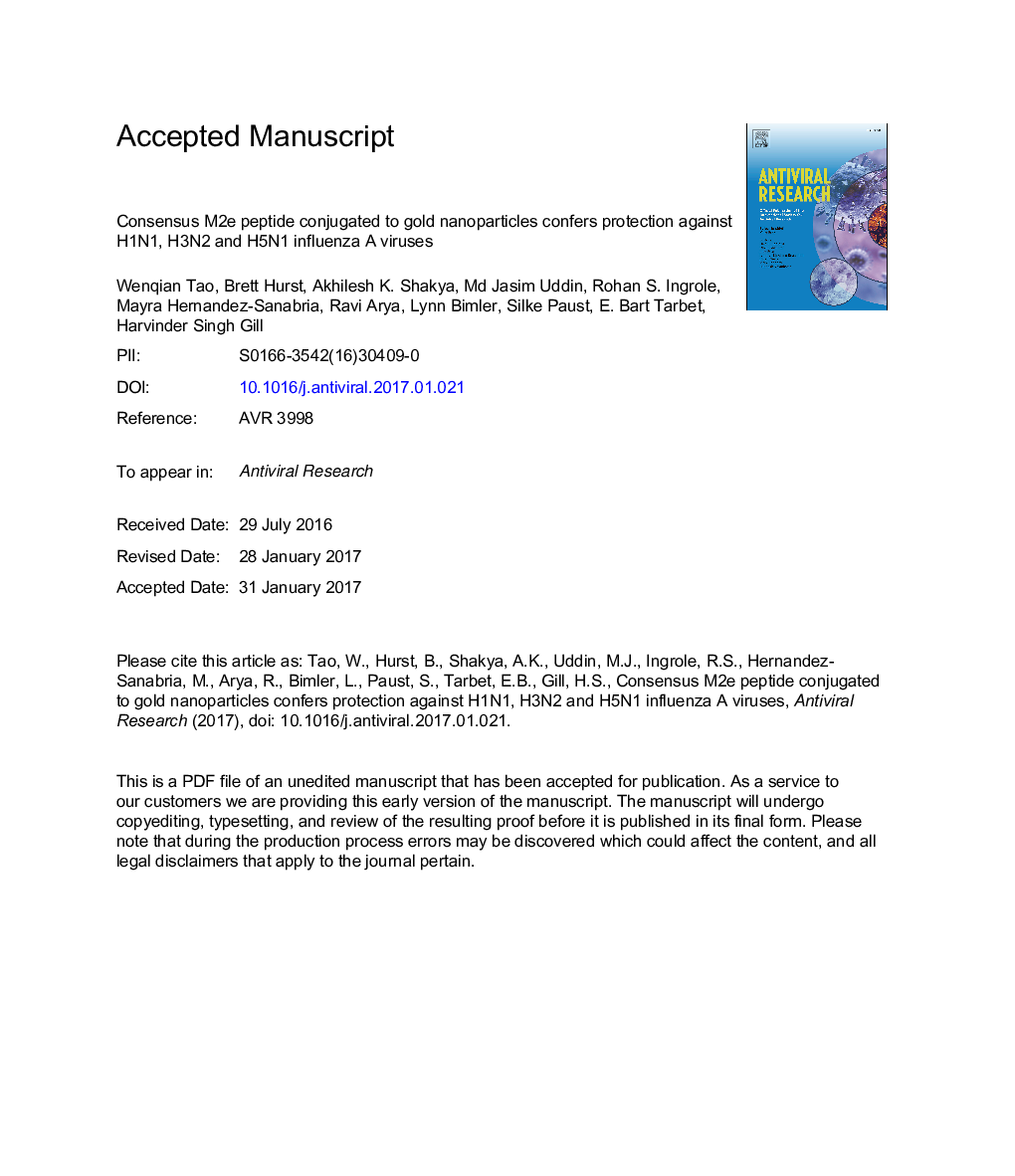| Article ID | Journal | Published Year | Pages | File Type |
|---|---|---|---|---|
| 5551799 | Antiviral Research | 2017 | 40 Pages |
Abstract
The extracellular domain of influenza A ion channel membrane matrix protein 2 (M2e) is considered to be a potential candidate to develop a universal influenza A vaccine. However poor immunogenicity of M2e presents a significant roadblock. We have developed a vaccine formulation comprising of the consensus M2e peptide conjugated to gold nanoparticles (AuNPs) with CpG as a soluble adjuvant (AuNP-M2e + sCpG). We demonstrate that intranasal delivery of AuNP-M2e + sCpG in mice induces lung B cell activation and robust serum anti-M2e immunoglobulin G (IgG) response, with stimulation of both IgG1 and IgG2a subtypes. Using Madin-Darby canine kidney (MDCK) cells infected with A/California/04/2009 (H1N1pdm) pandemic strain, or A/Victoria/3/75 (H3N2), or the highly pathogenic avian influenza virus A/Vietnam/1203/2004 (H5N1) as immunosorbants we further show that the antibodies generated are also capable of binding to the homotetrameric form of M2 expressed on infected cells. Lethal challenge of vaccinated mice with A/California/04/2009 (H1N1pdm) pandemic strain, A/Victoria/3/75 (H3N2), and the highly pathogenic avian influenza virus A/Vietnam/1203/2004 (H5N1) led to 100%, 92%, and 100% protection, respectively. Overall, this study helps to lay the foundation of a potential universal influenza A vaccine.
Keywords
Related Topics
Life Sciences
Immunology and Microbiology
Virology
Authors
Wenqian Tao, Brett L. Hurst, Akhilesh Kumar Shakya, Md Jasim Uddin, Rohan S.J. Ingrole, Mayra Hernandez-Sanabria, Ravi P. Arya, Lynn Bimler, Silke Paust, E. Bart Tarbet, Harvinder Singh Gill,
